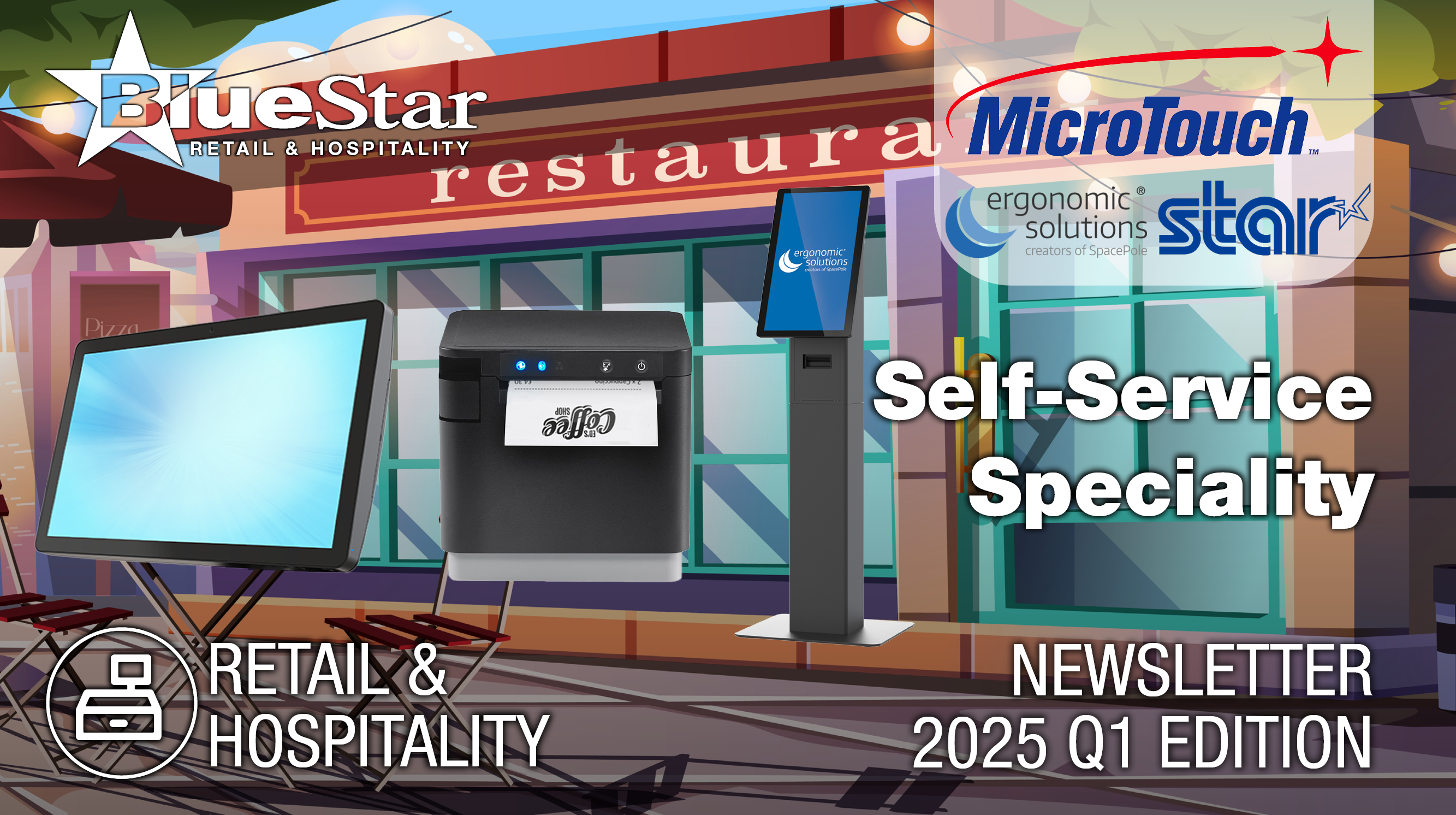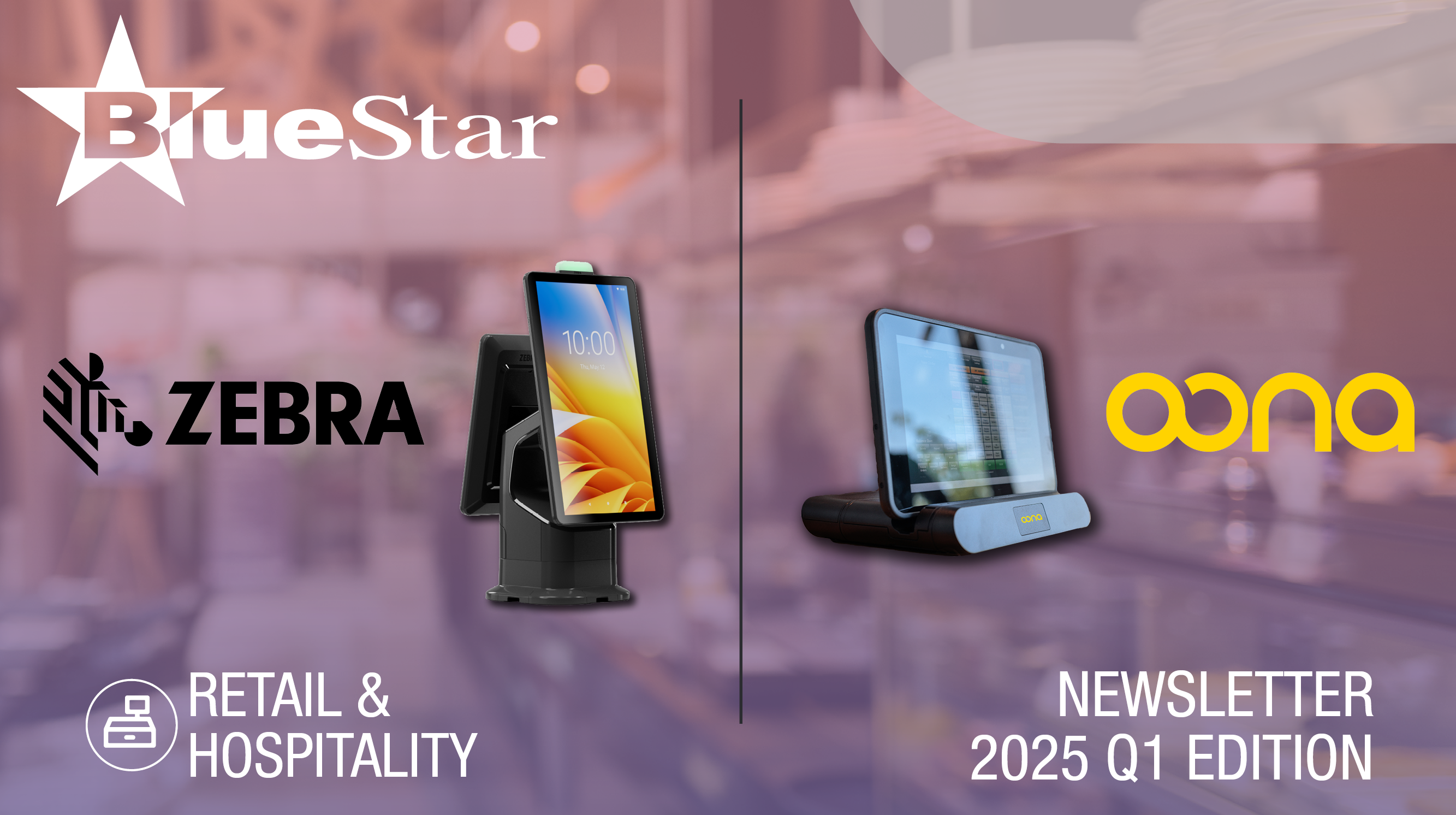Sustainability in Retail: IT Tools for Eco-Friendly Practices
The retail landscape is transforming significantly, driven by increasing consumer awareness of environmental issues.
BlueStar's diverse portfolio offers unparalleled access to premium products and services that drive business growth and success. From state-of-the-art hardware to advanced software solutions, our portfolio is designed to empower businesses with the tools they need to thrive in today's competitive landscape.
Our vertical-based content focuses on different industry technologies, solutions, and insights.
A true VAD offers top-notch pick, pack and ship services, and provides programs and services that add value to the distributed products that increase their value or worth.
The BlueStar DifferenceExplore the future of retail checkout technology and the opportunities to address evolving retail needs.
The retail landscape across the European Union is constantly changing, driven by evolving consumer expectations and the relentless march of technological innovation. One prominent trend reshaping the in-store experience is self-service checkout systems, which are projected to grow at a 13% CAGR (2026–2032), reaching $8.36 billion by 2032, fuelled by demand for operational efficiency and contactless payments. In Germany, stationary and mobile self-checkouts more than doubled between 2021 and 2023, reaching over 5,000 locations, with 82% of regular users rating their experience positively.
For technology solutions providers (TSPs) operating within the EU, understanding the trajectory of this technology and its potential to replace traditional point-of-sale (POS) systems is crucial for strategic planning and offering relevant solutions to retail clients.
Benefits of Self-Service Checkout
Several compelling factors fuel the rise of self-service checkout. For retailers, these systems offer the potential for significant operational efficiencies. By empowering customers to scan and pay for their purchases independently, businesses can often reduce the need for numerous staffed checkout lanes, leading to lower labour costs and the ability to redeploy staff to other customer-facing roles. Furthermore, self-service kiosks can often handle transactions more quickly, particularly for smaller basket sizes, reducing queue lengths and improving customer satisfaction. From the consumer perspective, self-service can offer greater convenience and speed, especially for those who prefer a more autonomous shopping experience. The ability to control the pace of their checkout and utilise various payment methods can enhance the overall shopping journey.
Self-Checkout Shortcomings
While the advantages of self-service are undeniable, it is premature to declare the outright demise of traditional POS systems. For many retail environments, particularly those with complex transactions, age-restricted goods, or a customer base that values personal interaction, staffed checkouts remain essential. Traditional POS systems often offer a level of human assistance and expertise that self-service kiosks cannot replicate. Moreover, they play a crucial role in handling returns, processing certain types of payments, and providing a point of contact for customer service inquiries.
A Hybrid Approach to Retail Checkout
Looking ahead, the most likely scenario is not a complete self-service takeover but rather a strategic blending of both technologies within the retail environment. Retailers will likely adopt a hybrid approach, deploying self-service kiosks for customers with smaller, straightforward purchases while retaining staffed POS lanes for more complex transactions and those who prefer human interaction. The optimal balance will vary depending on the retail sector, store format, and customer demographics. For instance, a supermarket might dedicate a significant portion of its checkout area to self-service options, while a high-end boutique may place a greater emphasis on traditional, personalised service.
Key Considerations for TSPs
For technology solutions providers looking to thrive in the evolving landscape of retail checkout within the EU, several key considerations will be crucial for success. First, it's vital to recognise that the future of retail checkout is likely hybrid. Avoid positioning self-service as a complete replacement for traditional POS. Instead, focus on understanding how to strategically integrate both technologies to meet the diverse needs of retailers and their customers. This requires assessing factors such as transaction volume, product type (including age-restricted items), customer demographics, and the desired level of customer interaction.
Second, your offerings should extend beyond simply providing the self-service hardware. Retailers need comprehensive solutions that seamlessly integrate with existing POS systems, payment gateways, inventory management software, and customer loyalty programs. Expertise in ensuring data consistency across all checkout channels, providing robust security features, and offering user-friendly interfaces for staff and customers will be essential. Furthermore, consider the integration of value-added services such as digital receipts, targeted promotions at the point of sale, and options for various payment methods, including contactless and mobile payments.
Third, recognise the importance of user experience. Self-service kiosks need to be intuitive and easy for customers with all technological abilities. This includes clear instructions, responsive touchscreens, and effective troubleshooting mechanisms. Similarly, the backend management system for retailers must be user-friendly, allowing for easy monitoring, maintenance, and data analysis of both self-service and traditional POS systems. Investing in user-centric design and thorough testing will be critical for successful deployments.
Finally, provide ongoing support and maintenance services. As retailers increasingly rely on self-service technology, they will require reliable technical assistance and timely maintenance to minimise downtime. Offering comprehensive support packages, including remote diagnostics, on-site repairs, and software updates, will be crucial for building long-term relationships and ensuring customer satisfaction. By positioning yourself as a trusted partner who can provide end-to-end solutions and ongoing support, you can effectively capitalise on the growing demand for integrated and efficient retail checkout technologies within the EU.

The retail landscape is transforming significantly, driven by increasing consumer awareness of environmental issues.

The Self-Service Shift by Amy Masterman

Transforming Business with Technology by Amy Masterman
